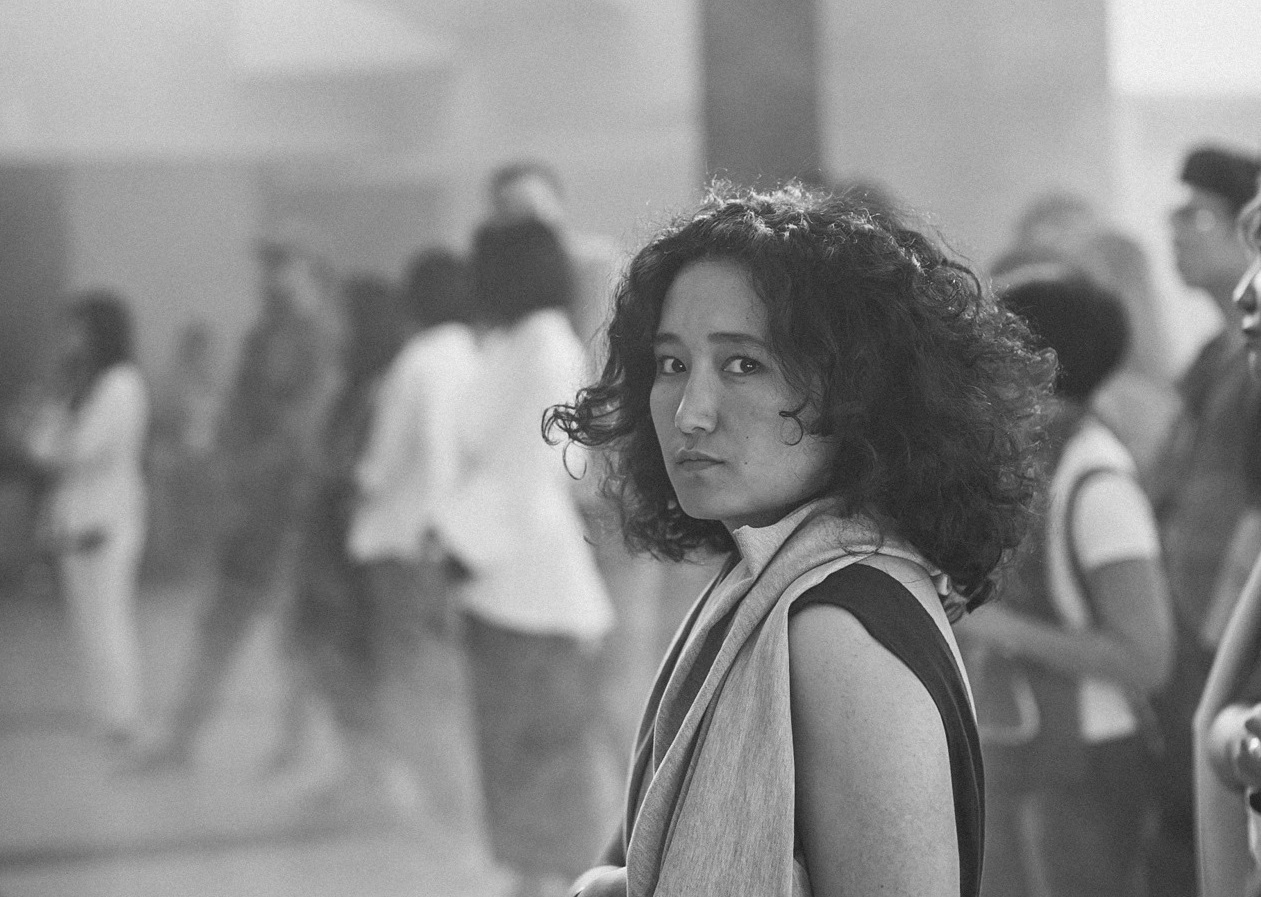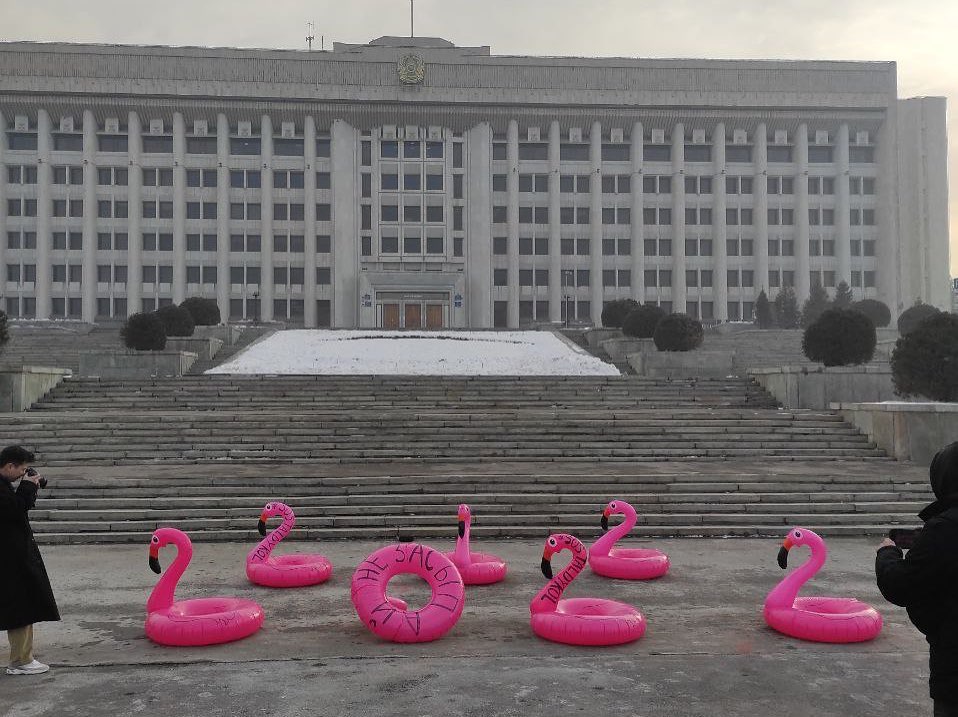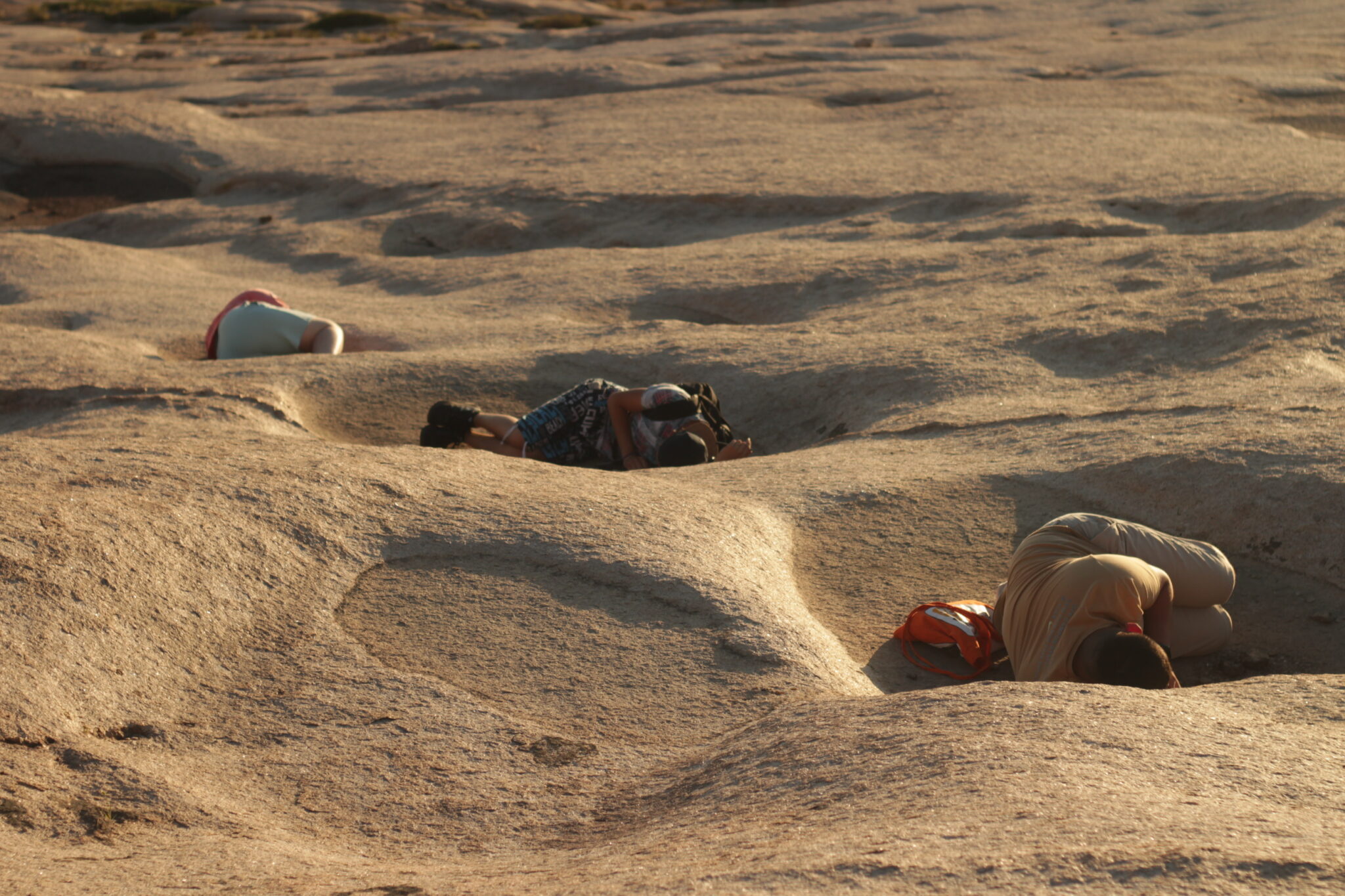Can artists stand up for natural boundaries, preserve lakes or plant forests? It turns out they can. Aigerim Kapar, contemporary art curator, founder of the contemporary art and public interaction platform ‘Artcom Platform’, co-initiator of the movement to preserve lakes in Astana ‘SOS Taldykol’, and the project on care about Lake Balkhash ‘Balqashqa Qamqor’, told about how artists respond to environmental challenges, how they engage the society and government institutions in problem-solving.

— Aigerim, what issues related to environmental problems are of concern for artists around the world?
— Amid global warming and increasing human impact on the environment, climate and environmental justice have become urgent issues around the world. These topics are also related to the indigenous rights and indigenous knowledge. For example, the Family Forest by the Jatiwangi Art Factory, an Indonesian team, designed to restore forests that play an important part in ecosystems, cultural traditions and daily lives of the Indonesians.
Their lands around villages are built up with factories of famous brands of the fashion industry, which is one of the ‘dirtiest’ sectors of economy. Jatiwangi Art Factory members along with residents buy up land plots and plant forests there by advocating the rights of indigenous people and raising funds, including via artistic actions and cultural events.
The Venice biennale 2024 ‘Foreigners everywhere’ also touches upon the climate issue, particularly, climate migration faced by communities across the world. For example, Australia is developing the new legislation as it already has cases when people lose their environment because of global warming.
Defended celestial pasture
— Speaking of Kazakhstan, what is the part of artists in the climate and environmental agenda of the country?
— Contemporary art has a great potential for transformation. Let’s take the art of engagement of communities and artistic group practices, which mean to improve the well-being of those communities. In Kazakhstan, the examples can be the Save Kok-Zhailau environmental movement to preserve the natural boundary Kok-Zhailau (translated from Kazakh as ‘celestial pasture’) in the Ile-Alatau National Park near Almaty. The movement became widely known after the city authorities had announced in 2017 that they reconsider plans to build a ski resort in the national park.
Artist Saltanat Tashimova has played an important part in organising actions and performances of Save Kok-Zhailau, and street artist Pasha Kas and others have joined the movement. The community has managed to defend the natural boundary, including by public reaction in the media and social networks, actions and engagement of local residents to joint action. Eventually, the natural boundary was returned to the national park in 2021.
— You are the co-initiator of the SOS Taldykol environmental movement to preserve lakes of Taldykol in Astana. Please tell us about the experience.
— Save Kok-Zhailau has inspired me and my colleagues from the movement. They were going to backfill the lakes of Taldykol with sand and permit site development there. Our primary task was to make Taldykol visible to urban residents because Astana residents did not take the lakes as natural ponds for a long time. We found out that locals had no idea of the lakes because Astana was a new city and the lakes became a part of the urban landscape over time, when the capital was expanded. The lakes were ‘invisible’ because sewage was drained to one of the ponds for a long time. It is clear that there was no infrastructure for recreation of locals around the lakes.
— What measures did you take to make the lakes ‘visible’?
— For two years, from 2020 to 2021, we organised, without interruption, cultural events at the lakes: fairs, lectures, performances, designed to make the lakes a spot of attraction. The campaign, Baqsy Saryny, held by artists Aigerim Ospan and Askhat Akhmedyarov, received a great public response, including abroad. The performance was held in two spots. At one of them, Ospan was playing a kobyz, a traditional instrument of Kazakh shamans (baksy translated from Kazakh as shaman), while sitting in front of the bulldozer. At the second spot, Akhmedyarov in the costume of a baksy blocked the road to trucks that brought subsoil to backfill the lakes.
The Shalqyma performance by Adyr-Aspan art group was another vivid event in support of the lakes. Nine women wearing white clothes and holding a white ribbon in their hands came to the lake. The artists depicted the swans guarding their nests.
The art has a force to reach out the hearts. Later on, not only every citizen of Astana was aware of the lakes, but also Almaty held a performance to protect the water ponds (the ‘Don’t fill’ campaign was held in January 2022 – Editor’s note).

We have worked to engage urban residents and experts to problem-solving: we have made calls to ecologists, lawyers, philosophers, musical bands, artists, athletes and invited them to discuss joint actions to preserve the lakes. Nearly 2,000 volunteers have joined the SOS Taldykol at different times, in total.
— But they backfilled the lakes. Was it all in vain?
— Some parts of the lakes were backfilled, and backfilling is still on. But the case has become a milestone in the history of the city. Previously, lakes in Astana were backfilled without due supervision, public spaces were built up. Now the civil society of the capital takes an active part in urban development issues.
Last year, SOS Taldykol transformed from movement to public organisation with participation of locals, ecologists, city planners and lawyers. They keep on preserving the existing water ponds in the Taldykol lake group and plan to have the backfilled parts restored.
Taking care of Balkhash
— In 2020, you held a research of the cultural landscape of Lake Balkhash. What was your initiative caused by?
— The research became a part of the international artistic project As You Go, which reconsiders the impact of the transcontinental investment programme of China ‘One Belt One Road’ on ecosystems and global communities.
I saw that Balkhash was a benchmark: interests of Russia and China coincide here, the region itself and its communities keep the multilevel group memory, which includes the history of entire Kazakhstan.

Ecosystems of Balkhash are in danger of extinction, including due to irrational use by Kazakhstan of waters of the cross-border river Ili that feeds the lake. As to China, where the river comes from, the volume of river discharge decreases every year. According to joint estimates of the government of Kazakhstan and McKinsey consulting group, the lake degradation will become irreversible by 2030 if the current situation continues.
It will have consequences not only for Kazakhstan, one third of whose territory will become the Balkhashkum (kum translated from Kazakh means desert) desert, by analogy with Aralkum, but also for the entire Central Asian region due to climate change.
In 2020, we launched the Balqashqa Qamqor (taking care of Balkhash) open initiative and held art interventions, educational programmes, fairs, art zines, documentaries and lectures about the history, culture, ecology of the lake, and keep on holding other various events.
— Can you name the events please?
— In summer and autumn of 2023, my colleagues and I lived and worked in the town of Balkhash, the biggest settlement on the lake shore. We held an interdisciplinary school with public lectures for all the residents there as part of our initiative on taking care of the lake. There was also the incubator to support social and creative youth projects.
This year, together with the Ministry of Water Resources and Ministry of Ecology, we are planning to hold the ‘Balkhash-2024’ forum dedicated to water, climate and culture issues in the lake basin. The last similar forum was held 19 years ago with participation of the president of Kazakhstan, i.e. the Balkhash condition was already a pressing issue at that time.
We know that we need a systematic approach to preserve Balkhash, and involvement of governmental agencies is crucial for our initiative.
The forum will contain international art exhibition, so we invited the Indonesian Jatiwangi Art Factory, Central Asia-based artists Almagul Menlibaeva, Said Atabekov, Askhat Akhmedyarov, Khadim Ali, Dilyara Kaipova and Qizlar team to the exhibition.
— Why would artists organise environmental forums?
— It is a welfare work for us, and it is the art – the art of community engagement. Today, an artist is not only a person who can draw and who draws. It is a person who works at the intersection of various disciplines and asks relevant questions.
We all live on one planet, with no other home for us. The consequences of environmental disasters do not conform to geopolitical boundaries, whether they are the shallowing of Balkhash, disappearance of the Aral Sea, or construction of Qosh-Tepa canal in the north of Afghanistan, which will receive water from the cross-border river of Amudarya. Therefore, we need to work together at regional and global levels to solve climate challenges, and to involve not only experts, governments and international organisations, but also artists and local communities.
https://cabar.asia/en/how-artists-of-kazakhstan-work-with-ecology-and-climate-change-topics

